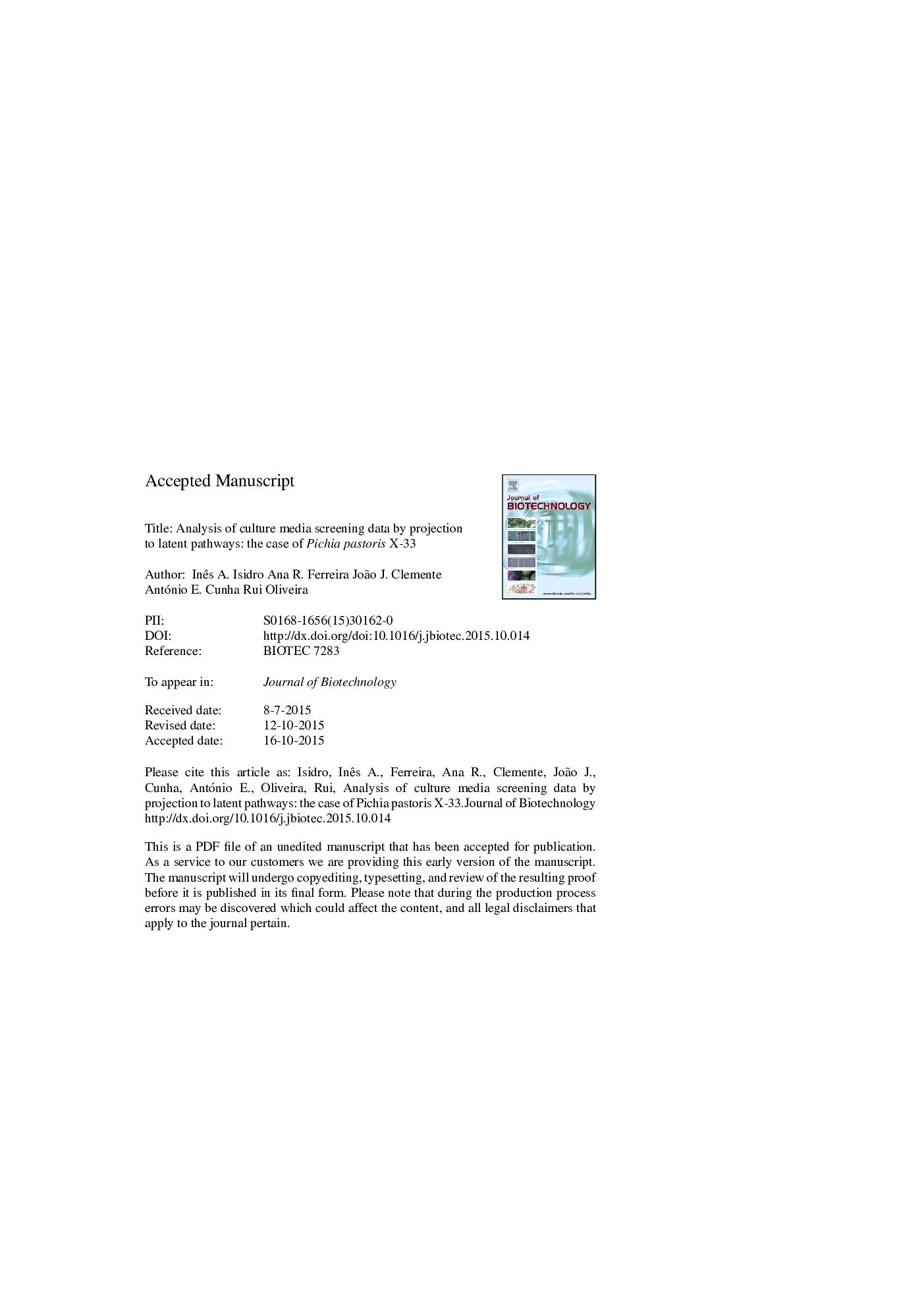| Article ID | Journal | Published Year | Pages | File Type |
|---|---|---|---|---|
| 6490774 | Journal of Biotechnology | 2016 | 31 Pages |
Abstract
Cell culture media formulations contain hundreds of individual components in water solutions which have complex interactions with metabolic pathways. The currently used statistical design methods are empirical and very limited to explore such a large design space. In a previous work we developed a computational method called projection to latent pathways (PLP), which was conceived to maximize covariance between envirome and fluxome data under the constraint of metabolic network elementary flux modes (EFM). More specifically, PLP identifies a minimal set of EFMs (i.e., pathways) with the highest possible correlation with envirome and fluxome measurements. In this paper we extend the concept for the analysis of culture media screening data to investigate how culture medium components up-regulate or down-regulate key metabolic pathways. A Pichia pastoris X-33 strain was cultivated in 26 shake flask experiments with variations in trace elements concentrations and basal medium dilution, based on the standard BSMÂ +Â PTM1 medium. PLP identified 3 EFMs (growth, maintenance and by-product formation) describing 98.8% of the variance in observed fluxes. Furthermore, PLP presented an overall predictive power comparable to that of PLS regression. Our results show iron and manganese at concentrations close to the PTM1 standard inhibit overall metabolic activity, while the main salts concentration (BSM) affected mainly energy expenditures for cellular maintenance.
Keywords
Related Topics
Physical Sciences and Engineering
Chemical Engineering
Bioengineering
Authors
Inês A. Isidro, Ana R. Ferreira, João J. Clemente, António E. Cunha, Rui Oliveira,
